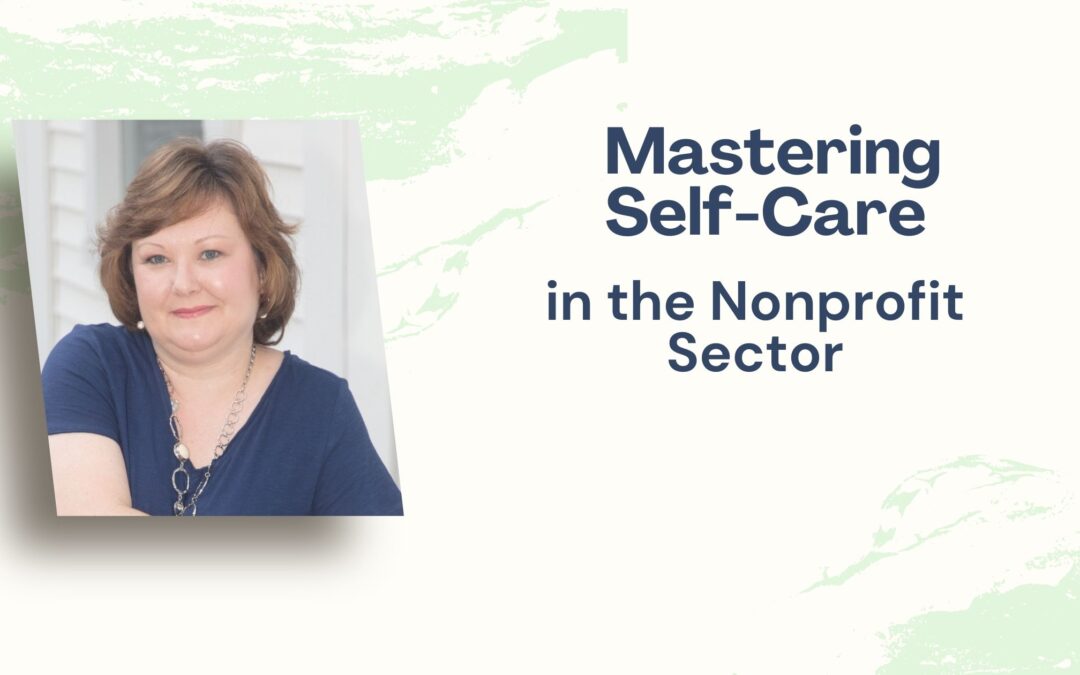Key Highlights
- Nonprofit work can be very rewarding, but it can also lead to burnout. This is often due to long hours, limited resources, and deep emotional involvement.
- It is important to recognize the symptoms of burnout in yourself and your team. Doing this early can help you take action.
- Keeping communication open, organizing tasks by priority, and creating a positive work culture can help lessen burnout a lot.
- Using technology can help automate tasks and make things easier. This can save time and lower your workload.
- Promoting self-care and offering benefits like wellness programs show that you care about your team’s well-being.
- A healthy and supported nonprofit workforce is key to reaching your organization’s mission.
Introduction
The nonprofit sector is full of people who care and want to make a change. However, the work can be tough. Many workers face a lot of stress due to a lack of resources and the emotional energy they put into their jobs. This can really affect the mental health of nonprofit employees. Employee burnout is a big problem. It can lead to less productivity, lower morale, and more staff leaving. This blog talks about burnout in nonprofits. It also shares useful tips to prevent and manage it well.
Understanding Nonprofit Burnout
Nonprofit organizations rely on the hard work and passion of people dedicated to important missions. However, this strong dedication often leads to long hours and heavy workloads. This can create tough situations that cause burnout. It’s essential to understand that burnout is more than just feeling tired or stressed. It is a state of lasting emotional, physical, and mental exhaustion from ongoing stress at work.
If burnout is not taken care of, it can affect every part of an organization. This will impact employee morale, cut down productivity, and hurt the success of the nonprofit’s mission. It’s vital to spot the signs of burnout and put in preventative measures. This helps to create a healthy, thriving, and impactful nonprofit environment.
Defining Burnout in the Nonprofit Sector
Nonprofit burnout is a type of burnout that people feel when they work in the nonprofit sector. This burnout comes from the high levels of stress seen in nonprofit work. Some of these stressors include limited resources, emotional work, and the pressure to make a real difference for others.
Chronic stress is a big reason for nonprofit burnout. It can lead to feeling very tired, being cynical, and not having a sense of personal achievement. Remember, burnout does not happen quickly; it builds up little by little over time.
By knowing what causes nonprofit burnout, organizations can help lessen its effects on their workers. It is important to tackle the unique stressors faced by nonprofit professionals. Doing this can help create a better and more supportive work environment.
Key Stressors Leading to Burnout
In the nonprofit sector, several things can increase the risk of burnout among hardworking staff. First, many nonprofit professionals are very dedicated to their mission. This often means they work long hours, going beyond a typical workday, to help the communities they serve. While this dedication is good, it can create a poor balance between work and personal life.
At the same time, limited resources add more stress to nonprofit employees. Many organizations deal with financial problems which can lead to having fewer staff members. This means that workers must take on many tasks, which can stretch them too thin. As a result, they are more likely to feel burnout. Plus, limited resources can take an emotional toll on employees.
Moreover, working with vulnerable groups and seeing the serious consequences of unmet needs can greatly contribute to burnout. Constant exposure to trauma, grief, and hardship can cause emotional exhaustion and compassion fatigue if not managed well.
Strategies for Managing Workload
Managing workload well is very important for avoiding burnout in nonprofit organizations. Using methods that help efficiency and reduce unneeded stress on employees is not only about finishing tasks. It’s also about making sure the work is completed in a healthy way.
This means using two main ideas. First, help employees learn how to prioritize their tasks. Second, use technology to make processes smoother. By giving employees the right skills and tools to handle their workload effectively, organizations can create a more balanced and less tense work atmosphere.
Prioritizing Tasks and Projects
A key skill for people working in nonprofits is learning how to prioritize tasks. They often have many projects to handle, urgent needs, and a strong wish to make a difference. This can make them feel overwhelmed. That’s why it’s important to tell the difference between urgent and important tasks. By prioritizing, nonprofit professionals can focus their efforts where they matter the most. This way, important activities that match the organization’s mission come first.
Using helpful tools can really change how well they manage their work. Things like making detailed to-do lists, using project management tools, and regularly checking and changing priorities can make a big difference. By breaking big tasks into smaller steps, people can feel a sense of success and keep moving forward.
It’s also important for nonprofit leaders to create a place where prioritizing tasks is key. By checking in with team members, giving help on how to manage workloads, and keeping communication open about capacity, they can build a supportive and helpful culture.
Integrating Technology to Streamline Processes
In today’s digital age, technology offers a range of tools to streamline processes, automate tasks, and alleviate workload in the nonprofit sector. Nonprofit leadership plays a crucial role in embracing and integrating technology to create efficiencies and empower employees to focus on meaningful work.
From communication platforms that facilitate collaboration to donor management systems that automate administrative tasks, the right technology can revolutionize how nonprofits operate. Choosing the right tools for your organization depends on specific needs, budget, and the types of tasks that can be automated or streamlined.
|
Technology Type |
Benefits |
|
Project Management Tools |
Improved organization, task delegation, and progress tracking |
|
Communication Platforms |
Seamless collaboration, reduced email clutter, and enhanced team communication |
|
Donor Management Systems |
Automated donation processing, donor communication, and reporting |
|
Fundraising Platforms |
Streamlined campaign creation, donor engagement, and online fundraising |
Cultivating a Positive Workplace Culture
A positive workplace culture is very important to stop and deal with burnout in nonprofit organizations. It’s not just about making a nice place to work. It’s also about building an environment where employees feel supported, valued, and empowered.
This involves encouraging open communication, celebrating achievements, and creating a sense of community. Remember, a positive workplace culture helps not only the employees but also the overall success and impact of the organization.
Encouraging Open Communication
A key part of a good workplace culture is open communication. This means making a safe space for every team member to share their feelings, concerns, and ideas without worrying about being judged or punished.
Holding regular team meetings, one-on-one check-ins, and using suggestion boxes can help improve communication. This way, problems can be spotted early, and the team can work together to solve them. When employees feel heard and appreciated, it builds trust and a sense of belonging. These are important to stop burnout.
Also, being open about decisions in the organization and asking for input from staff at all levels shows that their views are important. This helps create ownership and shared responsibility, leading to a more engaged and strong workforce.
Recognizing and Celebrating Achievements
In the busy world of nonprofits, we often jump from one project to another. We might forget to recognize the hard work and commitment of our team. However, it is important to acknowledge and celebrate achievements, big or small. This helps create a positive workplace culture that can prevent burnout.
Nonprofit employees want to make a difference. When we recognize their contributions, it boosts their sense of purpose and value. We can show our appreciation in different ways. This can include saying thank you, writing notes, or giving public recognition in team meetings. Celebrating milestones is also a great way to show appreciation.
By including a culture of appreciation in our nonprofit, leaders can create a positive cycle. Recognizing achievements lifts spirits, strengthens team connections, and builds pride. All of this helps create a more engaged and strong workforce. It prepares them better to face challenges and avoid burnout.
Conclusion
Nonprofit burnout is an important issue that needs attention. It is vital to know the signs and things that cause burnout. By understanding these factors, nonprofits can create strong plans. This can include deciding what tasks are most important and encouraging open communication to avoid burnout. Building a positive workplace culture is important. This helps recognize the hard work of employees and supports their mental health. Taking care of your team’s well-being helps your nonprofit be successful in the long run and achieve its goals. If you need more help on how to fight burnout in your nonprofit sector, reach out for caring and supportive advice today.
Frequently Asked Questions
What are the first signs of burnout in nonprofit employees?
Symptoms of burnout in nonprofit employees can show up in many ways. These symptoms affect mental health and emotional health. Early signs often include feeling more tired, becoming cynical, having trouble focusing, and performing worse at work.
How can nonprofits support employees’ mental health effectively?
Nonprofits can help employees’ mental health. They can do this by building a friendly workplace culture. This culture should encourage people to talk openly. They should also offer chances for professional development. Implementing a strong wellness program is important, too. Lastly, it’s good to provide resources to help with employee burnout. This is especially helpful because nonprofit work can be very demanding.
Join the Nonprofit Book Club or get more information on the book club.




Recent Comments